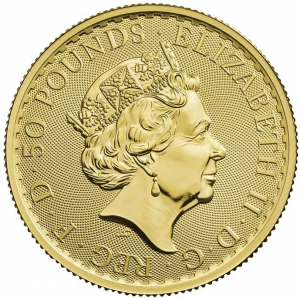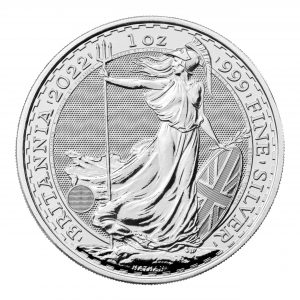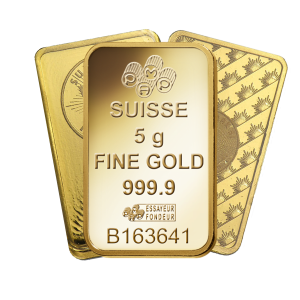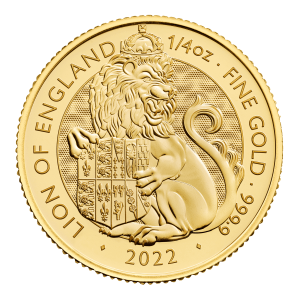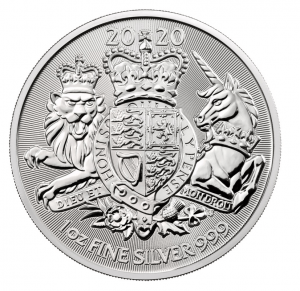Silver investing now and in the coming years
In this video, we’ll take a look at silver’s prospects for 2020 and beyond. Over the past 5 years, interest in silver has grown exponentially to the point where we now get almost as many silver enquiries as gold.
So is silver a worthwhile investment in 2022 and beyond, and what can we expect from it, we examine silver investing in 2022?
I’d like to start by looking at downside risk. The silver price fell from around £13 an ounce at the start of 2017, to £12.50/oz the following year, and nearer to £12 an ounce in 2019. Clearly, the prospect of owning a depreciating asset is unappealing.
Downside risk
However, unlike gold, silver’s demand consists predominantly from industrial use. As the world’s most conductive material, silver is used in most electronic components, solar panels, photography and medicines. The digital age is only going to develop over the coming years, creating new electronic demands on silver. The search for alternative energy will lead to increasing silver demand with electric cars and electric solar energy. So with industrial demand rising, downside risk to silver is minimal.
Gold-Silver ratio
It’s also fair to say that the silver price has suffered far worse in recent years than the gold price, with clear suggestions that it’s been oversold. The ratio between the two metals’ prices has widened from a long term average of 47:1 to 70:1 a few years ago, and now an incredible 95:1.
This theme may scare inexperienced investors, but this would suggest a buying opportunity in 2022 for silver. If you can lock in prices when the silver price is so low, your upside becomes magnified. The silver market is far smaller than that of gold, so prices can be more volatile. It also means that the price can move up in percentage terms far quicker and far greater.
Global economy
The silver price could well receive a double boost over the coming years.
As well as the rising industrial demand, there’s plenty of uncertainty in the global economy to boost silver as a safe haven. 2019 and beyond marked a turn in the economic cycle. The middle of 2018 saw property prices begin to fall and global stock markets start to decline from their 9-year bull run. After nearly a decade of rising stock and property prices, the global economy is set for a big correction, especially with interest rates now on the rise. Throw in Brexit and a growing car leasing credit bubble, and safe havens could well become the flavour of the month once again. Gold will likely rise first, with silver following behind. But once silver starts its upward trend, the pace of increase will outstrip that of gold.
Diversify
A lot of investors ask me whether they should buy gold or silver. After all the two metals are quite different. For me, there’s a strong case to own both. Diversification is key in today’s digital globalised economy, so investing in silver and gold is a great way to hedge your hedge!
Now tax free
By sticking to Silver Britannia coins, any profit you make is also free from Capital Gains Tax!
Silver investing in 2020 with Physical Gold Ltd
So there you have it. 2020 and beyond are set to be exciting years for silver investing. Courage may be needed to enter a market which has fallen in value, but history will tell you, that’s the exact time to stack your claim.
If you feel silver could play a role in your investment portfolio, or you simply want to buy some silver coins or bars, then don’t hesitate to call our team of experts on 020 7060 9992 for any guidance you need.
I hope you’ve enjoyed today’s video. If so, please check out all 20 videos in the gold & silver investment guide series.
Different gold alloys
The chemistry of gold makes it a unique element in the world, such that there is none like it that can be found. Many of us learnt during high school chemistry lessons that the chemical symbol of gold is Au. Gold has an atomic number of 79, which simply means that each atom of the precious metal contains 79 protons within its nucleus. The unique colour of gold, however, is not dependent on the atoms, as the colour of a metal is dependent on how electrons behave between energy bands. In the case of gold, its unique colour is based on these transitions which give the metal an unmistakable, alluring, warm lustre that humans have found irresistible for centuries.
The unique properties of gold
The purity of gold is indicated by the karat number the metal possesses. When gold is fused into an alloy with other metals, its purity decreases, as does its karat number. So, 14 karat gold has a far greater proportion of base metals than 24 karat gold, which has a purity of 999.9. Now, that leads us to an interesting question. Why is gold formed into an alloy with other metals? In reality, this has a lot to do with its usage. Gold is commonly used in making jewellery. In order to use gold to carefully craft the intricate designs of jewels, the metal needs to undergo certain changes that make the substance easier to work with.

Gold is often melted and fused with other metals to form alloys with unique properties
For example, we know that pure gold is extremely soft and malleable. This means that if we manufacture jewellery using 24 karats pure gold, the products would never retain their shapes. On the other hand, pure gold is also ductile. Believe it or not, one ounce of gold can be pulled into 80 km of gold wire with a thickness of 5 microns. So, in order to make it more usable and durable, certain base metals need to be added to gold to harden it. So, as a savvy gold investor, you need to know and understand the different types of gold. Understanding its composition gives us greater insight into its characteristics and industrial usage.
The different faces of gold
The creation of gold alloys greatly affects the properties of the precious metal, which is why it’s a useful technique that has been around for years. Important properties like the colour, melting point, ductility or malleability of gold can be altered by simply adding other metals into the mix. When we add base metals like zinc, cadmium or tin, the melting point of gold is reduced substantially.
Gold has a melting point of 1063 degrees Celsius. Due to the reduction of the melting point, savings in energy costs are achieved. On the other hand, adding platinum or nickel increases the hardness of the alloy. This is essential for jewellery manufacturers, as pure gold is too soft to work with. By hardening the surface, the jewellery also becomes scratch-resistant, which is an added advantage.
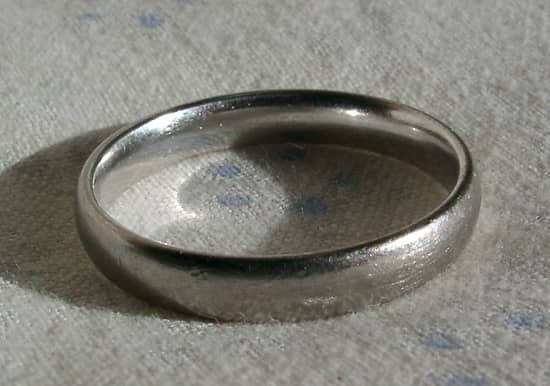
White gold is plated with rhodium in order to make it attractive
Changes in colour
Gold jewellery now comes in a range of fantastic colours. These colour effects are created by adding copper, palladium, silver or nickel in accurate proportions. Since these metals each have their own properties, they are able to create different hues when fused with gold. Popular gold shades like green, grey or white gold are created in this manner. An interesting example is white gold. This is created by adding rhodium. The combination not only creates a white lustre, it also makes the surface much harder, making it scratch proof. The gold-titanium alloy is another example of an innovative alloy used to make wedding rings. In this alloy, only 1% of titanium is introduced, which is enough to make it really strong and creates a lovely shimmer, along with a grey tone.
Download our FREE 7 Step cheat sheet to buying the best type of gold for investment here
Call our gold experts to find out about different types of gold
At Physical Gold, our gold experts are able to guide customers on every type of gold there is in the market. We advise customers just like you on making investments in precious metals every day. We are a reputed online gold and silver broker and all our products are sold with a certificate that guarantees its genuineness as well as a buyback promise. Call our team now on 020 7060 9992 or drop us an email and a member of our team will get in touch right away.
Image credits: Pixabay and Wikimedia Commons
Why buy physical gold rather than gold funds?
Investing in physical gold coins and bars is one of the most popular ways of buying gold. There are other options, ranging from gold funds and gold ETFs, to buying individual gold mining stocks or electronic fractional ownership of pooled gold.
It’s important to understand that the right choice when buying gold will depend on your objectives and circumstances. Generally speaking, if you want the most secure and trustworthy of owning gold, then buying physical gold coins and bars is the only method to achieve that. If you’re seeking to buy and sell gold often and trade the market, then electronic versions can be more cost efficient, albeit more risky.
Here we break down the considerations when considering why to buy physical gold.
1. Security and Integrity
While ETFs have provided an accessible way for investors to gain exposure to the gold market there are many fears circulating about their security and integrity. For starters, the fact it is a structured paper asset that not everyone fully understands tends to defeat the object of owning a simple tangible asset like gold. So many investors have been stung over the past 5 years investing into asset-backed securities that were rated AAA by the credit rating agencies, only to see them downgraded to junk status overnight when everyone realised that the subprime mortgages they were linked to would not payout. It transpired that many very sophisticated investors never really knew which assets the bond was linked to or understood their lack of protection against such defaults. So are you more comfortable understanding the risks of holding gold coins or gold funds or ETFs?
Press reports are speculating that only 10% of the traded ETF value is backed by actual gold. With a distinct lack of auditing, its difficult to know for sure what the exact figure is.
Jefferey Christian of the CPM Group confirmed that gold is leveraged around 100:1 at a Commodities Futures Trade Commission (CFTC) Hearing on March 26, 2010. This means that there are around 100 claims for each ounce of gold in existence and so not enough gold to be delivered to everyone who has been promised paper gold.
So the question remains would you be able to access the value of your ETF if half or more of the investors decided to withdraw at the same time?
Want your gold questions answered? Download our FREE Ultimate Guide to gold investment here
2. Counterparty Risk
The term counterparty risk has become far more used and relevant over the past few
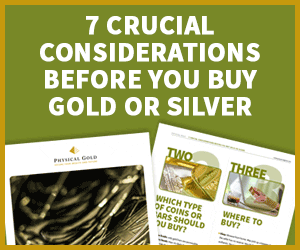
The 2008 credit crunch saw bankruptcies to seriously major corporations from General Motors to Lehman Brothers. I saw many friends who had built up shares in Lehmans over many years of work and anticipated those stocks providing their retirement. No-one could have predicted that they would lose value so quickly and Lehman would go under.
We then saw the next phase of counterparty risk with Sovereign debt. Investors who thought they were taking on very little risk by investing in Government bonds faced the very real prospect of not being paid out in full. Countries such as Ireland, Greece, Portugal and Spain need help from the EU and IMF to repay their debts. There is every chance that bondholders will not receive all the capital back.
And now, in the new Covid world, Government debt is at record highs and corporations are struggling to adapt and survive under the new world parameters.
With physical gold, there is NO counterparty risk. It doesn’t matter if a Government fails to repay bonds, a corporation goes bankrupt or even if the gold dealer you bought the gold from ceases trading. You will always have the physical asset to do with as you like.
By investing in gold mining stock, ETF or Gold funds each poses some sort of counterparty exposure and a threat to the value of your asset. Remember paper gold is a promise to pay, not the real thing!
3. Risk Profile
If you’re considering a choice between mining stocks and physical gold, its crucial to realise that these are different asset classes with entirely different risk profiles. Firstly, investing in mining stocks means your investment is linked to the performance of one company. As a paper asset, if that company underperforms, or even worse goes bankrupt, there is a chance that your investment becomes worthless. The value of gold coins and bars can never fall to zero or anywhere near because of the intrinsic gold content. During times of global economic turmoil mining stocks and bullion perform quite differently. Terror threats, currency depreciations, huge unemployment, record deficits and banking crises don’t provide conducive conditions for equity markets, which is why we’ve seen more and more people fleeing to the safety of gold bars and coins. Generally, while mining stocks have the potential for impressive returns they tend not to outperform physical gold during times of crisis such as the recent credit crunch. During sharp market declines such as the 1987 stock market crash, mining stocks become correlated to the broad equity markets rather than the price of bullion.
4. Comprehensive Insurance
If the reason you want to invest in gold is for portfolio insurance then make sure you have a Comprehensive policy! Everyone knows that gold provides security against economic and political unrest, making it the perfect safe haven asset in the current world in which we live. In that case, you want this wealth protection to be thorough. By investing in paper gold its like buying an insurance policy with get-out clauses. In other words, it doesn’t provide full coverage. There are still risks attached such as counterparty risk. By investing into physical gold, its like having the most comprehensive insurance available, putting your mind at rest that no matter what the next financial headline is, your physical gold holding will provide the necessary balance.
5. Tax Efficiency
In the UK, there is the opportunity to own physical gold coins which are completely tax-free. All investment grade gold is VAT exempt. You pay no income tax while holding the gold and UK coins such as the Britannia and Sovereign are Capital Gains Tax-free due to their status as legal tender. Compare this to paper gold such as a mining stock or gold funds where you’ll have to pay income tax on any dividends and capital gains tax if you sell the shares at a profit. With CGT now up to 28% for higher rate taxpayers, that’s nearly a third of your profits!
6. Accessibility
Accessibility in times of crisis is crucial. After all, gold should act as your crisis hedge. Over the past month, we’ve read about the attempted ink-cartridge bombers and MI5 revealing renewed threats to the UK, France and Germany. The Eiffel Tower has been evacuated twice in recent months. If one of these attempts gets through and the financial system collapses for a week or so how easy is it to access funds through your gold ETF, mining shares or Gold funds? By holding the physical metal itself, especially in the form of globally recognised coins, you hold the ultimate liquidity.
With the invasion of Ukraine by Vladimir Putin and the crackdown on tech companies in China, there are 87 fewer billionaires in this year’s Forbe’s billionaire list, with 2,688 billionaires making the 36th-annual ranking in total.
Delving into the billionaire list, our research shows not many reports focus on the achievements of millennial billionaires in particular. According to Beresford Research, millennials in 2022 are aged 26-41, where 122 millennial billionaires made the Forbes billionaire list this year.
To understand how millennials have made their fortunes despite being so young in age, we have analysed the latest data from Forbes to assess which industry has the most millennial billionaires.
The industry with the most millennial billionaires
Our research shows technology is the industry with the most millennial billionaires, with 43 in total. The combined net worth of millennial technology billionaires reaches $239.1 billion.
| Industry | No. of Millennial Billionaires | Collective Net Worth of Millennial Billionaires (USD$ billion) |
| Technology | 43 | $239.1 |
| Finance and Investments | 21 | $106.5 |
| Media and Entertainment | 11 | $85.1 |
| Fashion and Retail | 10 | $38.1 |
| Real Estate | 7 | $30.3 |
| Healthcare | 6 | $7.6 |
| Automotive | 4 | $10.0 |
| Food and Beverage | 4 | $18.4 |
| Manufacturing | 4 | $11.6 |
| Metals and Mining | 4 | $7.1 |
| Construction and Engineering | 1 | $1.2 |
| Energy | 1 | $6.6 |
The finance and investments industry has the second highest number of millennial billionaires, with 21 in total. This is followed by media and entertainment where the billionaires have a collective net worth of $85.1 billion.
Construction and engineering, and energy each have just one millennial billionaire. Interestingly, these are the two industries with the eldest millionaire billionaires.
The industries with the youngest millennial billionaires
The healthcare, and metals and mining industries have the youngest average age of millennial billionaires, at 34 years old. The millennials in these industries combined have a net worth $14.7 billion.
| Industry | Average age | No. of Millennial Billionaires | Collective Net Worth of Millennial Billionaires (USD$ billion) |
| Healthcare | 34 | 6 | $7.6 |
| Metals and Mining | 34 | 4 | $7.1 |
| Finance and Investments | 36 | 21 | $106.5 |
| Fashion and Retail | 36 | 10 | $38.1 |
| Automotive | 36 | 4 | $10.0 |
| Manufacturing | 36 | 4 | $11.6 |
| Technology | 37 | 43 | $239.1 |
| Food and Beverage | 37 | 4 | $18.4 |
| Real Estate | 38 | 7 | $30.3 |
| Media and Entertainment | 39 | 11 | $85.1 |
| Energy | 39 | 1 | $6.6 |
| Construction and Engineering | 41 | 1 | $1.2 |
There are two 26 year old millennial billionaires in the Forbes 2022 billionaire list. One is Henrique Dubugras, a billionaire from Brazil who operates in the finance and investment sector, and the second is Katharina Andresen who is located in Norway.
The 10 richest millennial billionaires in the world
The richest millennial billionaire in the world is Mark Zuckerberg, with a net worth of $67.3 billion. Second to Mark is Zhang Yiming who operates in the media and entertainment industry.
| Name | Age | Industry | finalWorth | Country of Citizenship |
| Mark Zuckerberg | 37 | Technology | 67300 | United States |
| Zhang Yiming | 38 | Media & Entertainment | 50000 | China |
| Sam Bankman-Fried | 30 | Finance & Investments | 24000 | United States |
| Guillaume Pousaz | 40 | Finance & Investments | 23000 | Switzerland |
| Yang Huiyan & family | 40 | Real Estate | 18700 | China |
| Lukas Walton | 35 | Fashion & Retail | 16500 | United States |
| Pavel Durov | 37 | Technology | 15100 | Russia |
| Dustin Moskovitz | 37 | Technology | 11500 | United States |
| Brian Chesky | 40 | Technology | 11500 | United States |
| Eduardo Saverin | 40 | Technology | 10600 | Brazil |
Daniel Fisher, CEO at Physical Gold commented:
“Our research shows there has been a drop in billionaires making the Forbes billionaire list this year, but an increase in the number of millennial billionaires.”
New entrants to the list include Rihanna, who is credited as a ‘self-made’ billionaire, at 34 years old. Rihanna has a net worth of $1.7 billion. Her success is attributed to her cosmetics line Fenty Beauty, her lingerie company Savage x Fenty, and her career as a chart-topping musician and actress.
Mr Fisher continues; “Rihanna is an example of the importance of diversifying your portfolio. This is particularly key against a volatile market since it can reduce losses incurred. For example, investing in commodities which are in high demand during periods of economic turmoil can help investors weather the storm.
“We have seen external factors impact billionaires this year, where the number of Russian billionaires has dropped due to the war. There have also been drops in the number of billionaires from China where there has been a crackdown on technology companies. Despite this, technology remains the industry with the highest number of millionaire billionaires, with 43 making the list this year.”
Methodology for research
The millennial billionaire research was undertaken by Physical Gold through an analysis of the Forbes World’s Billionaire list, to see how many billionaires there were aged 26-41.
The results were tallied for each included industry and were thus ranked by the industries that currently have the most to least number of millennial billionaires.
For millennial billionaires who accumulated their fortune from more than one sector, they were excluded from the research so it could be a fair and definitive assessment for each included industry in the research.
“This time of year we see more and more people looking to the precious metals market not only as a safe haven investment but also for savvy Christmas gifts.” Daniel Fisher, CEO, Physical Gold.
Buying gold for Christmas
The precious metals market is braced for sales to rise dramatically over the next few weeks, as an increasing number of new investors look to give the gift of gold this Christmas.
Last Christmas, Physical Gold – the UK’s leading provider of gold and silver coins and bars – saw a 53% increase in customers buying Sovereign coins and 5g gold bars, which are designed as gifts to help people save for their future.
In 2020, The Royal Mint saw a 510% surge in gold sales in November and December, compared with the year before. Daniel Fisher, CEO, Physical Gold, said: “This time of year we really do see more people looking at the precious metals market, not only as a safe haven investment but also for savvy Christmas gifts.
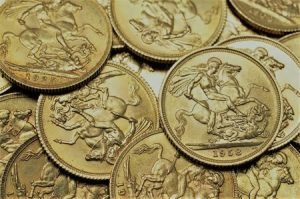
Gold Sovereigns are a top choice as Christmas gifts
Gold preferred to gift cards
“Once a high street gift card might have done the trick, but today there may not be a more savvier Christmas present to buy than physical gold; to invest in your future, a family member’s future or to boost your own investment portfolio.”
Recently there has been a huge uptick in the sale of precious metals, noticeably among young adults, and that has been evident in Physical Gold’s recent sales. According to the Royal Mint, the number of customers purchasing gold aged between 22 and 37 increased by 32% in 2020, as the coronavirus pandemic put precious metals under the spotlight.
Daniel Fisher continued: “At Physical Gold we are hearing from plenty of millennials stuck for Christmas presents, coming to us with a genuine interest in purchasing precious metals; be that for friends, family or partners.
“Lately, too, there has been an increase in older generations purchasing physical gold. A number of our customers have hinted at these investments being put aside for their children’s and grandchildren’s future.”
Gold price spikes with demand
Customers are being warned not to leave their Christmas gold shopping until the last minute as gold prices are expected to rise in December. In 2020, the gold price dropped significantly in November, losing almost 10% of its value. Prices then rose around 3% again leading up to Christmas day and the New Year period. The pattern was similar in 2019, with 3% depreciation in November, followed by 2.5% recovery in December.
Daniel Fisher, says: “Our historic prices would seem to suggest that the best time to buy Christmas gold is around the end of November and early December.
“Whether you are an experienced gold investor, or looking for a unique Christmas gift, Physical Gold offers its customers a simple, transparent and cost-effective route to holding top-grade investment gold in your hand.”
As a present, gold or silver has the advantage of being a tangible gift that someone can open at Christmas. One of the big advantages of precious metals is that there are numerous products you can invest in, depending on what you feel comfortable with. The most obvious is simply to buy physical gold, either in the form of gold bars or coins.
Physical Gold has an extensive portfolio of gold and silver bars and coins in a variety of forms and denominations in the UK. Whatever your reasons for buying precious metals, Physical Gold Limited offers a safe and secure way to buy gold and silver online.
Holding gold in your portfolio might be one way to invest and protect your purchasing power, but there is now an alternative asset that has soared in popularity within recent years: cryptocurrency.
Daniel Fisher, Managing Director, Physical Gold, believes we may now be living in a world where investment in both gold and cryptocurrencies can form a stable and speculative portfolio for investors.
Crypto & Gold’s relationship
Quite often I am asked the question: ‘Should I invest in an emerging asset like Bitcoin or a traditional safe haven like gold?’ As the UK’s leading provider of gold and silver coins and bars, it should be in my best interests to say ‘gold, of course!’ but, driven by changing markets and unsettled Covid-19 economies, I’m becoming increasingly aware of the pull for investors in cryptocurrency – which in turn, is being invested into the precious metal market.
For hundreds of years, gold has dominated the safe-haven asset arena. Some investors like to think of gold as insurance for their money. If there is a concern about a nation’s currency, or if there’s an economic collapse, people usually turn to gold because it benefits in times of crisis. During recessions and times of global turbulence, gold can commonly return more than 30% in a year.
But for those seeking the possibility of mega gains, crypto is tempting many new investors.
While Bitcoin was launched just over a decade ago, cryptocurrencies are beginning to achieve widespread recognition. Historically, those who did not want to ride stock market swings to their full extent invested in gold. However, the exponential growth and increasing popularity of cryptocurrencies over the past year has sparked the interest of many investors.

Bitcoin is becoming a mainstream asset
Why gold
John Carter, founder of Simpler Trading, says “gold has over 5,000 years of history on its side and isn’t going anywhere, which means it is super safe.” He’s right; gold is valuable as a material for consumer goods and it is scarce. Regardless of demand, gold supply remains low. It cannot be manufactured like a company issues new shares, or a federal bank prints money. Measured against highly volatile cryptocurrencies, gold certainly offers more stability.
Cryptocurrencies fluctuate violently – the rarity and lack of a central authority contribute to this as well as popular culture. Both political and social trends influence cryptocurrency to a higher degree than gold, making precious metals a far safer option. And, while gold prices have experienced volatility similar to stocks in the short term, over time, the precious metal’s value remains stable.
The reports of gold’s demise have been greatly exaggerated. Cryptocurrencies are certainly a legitimate asset and have the potential to be a true “store of value” – joining a select group of assets, commodities and currencies that can be saved, retrieved and exchanged without deteriorating in value. However, gold has at least a 5,000 year head start as a widely-accepted, global medium of exchange and value, and the gold market enjoys great depth and liquidity. The total amount of physical gold held by investors and central banks is an estimated $3.7 trillion.
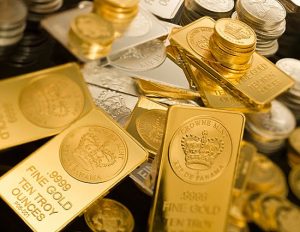
Gold has an unparalleled track record
A match made in heaven
Although some cryptocurrencies have experienced meteoric rises fueled by speculators, having exposure to both gold and cryptos makes sense as our idea of money moves into the 21st century.
Undeniably, there has been clear evidence of a shift in the market. As this new crypto-sector evolves, Physical Gold has seen incredible growth in the “pair trade” between gold and cryptos – investors who swap their digital coins for physical gold and silver, and sometimes back again.
We know that diversifying a portfolio can help mitigate risk and potential loss. Today, most investors embed this tactic into their investment strategy, with many arguing that cryptocurrencies and gold are actually the perfect match for your portfolio.
Although Bitcoin doesn’t have age on its side, its soaring popularity reflects genuine investor interest. The crypto revolution has led to an explosion in both the number and value of other digital currencies. Cryptocurrency promises potentially high returns and diversification, but at the cost of security and investors still view precious metals as the stable value store during turbulent times.
If you’re looking for a safe-haven asset that is negatively correlated to other assets, gold has an important role in the stability of your portfolio as a “buy and hold” investment. It also acts as a diversifier, inflation hedge and capital preserver. All of these benefits can result in positive returns over time.
The case for Bitcoin is speculative given that it doesn’t have much utility yet. It is, perhaps, a gambler’s playing field – which for many investors is an intriguing and exciting prospect, but, by also investing in gold they can sleep easy knowing they have their gold in their pockets, while also taking a venture in the cryptocurrencies market. While many crypto projects will fall to zero, physical gold bars and coins will always have an intrinsic value.
Both cryptocurrencies and precious metals can be islands of security in an ocean of financial turbulence. Both will play vital roles as repositories of value, especially in a world plagued by economic and political uncertainty. Whatever you do, it’s important to watch your risk level when buying gold with cryptos.
The best way to minimise that risk is to use a trusted dealer. Physical Gold offers a convenient and efficient way to buy silver and gold, online with confidence that your purchase is protected by a 3D secure authentication payment system.
In the coming years, we can expect cryptocurrencies to remain subject to more booms and busts, but gold will always be on hand to offer a way of protecting your wealth in a post-Covid-19 world.
Whether you believe cryptocurrencies are best suited as a store of value or medium of exchange is somewhat irrelevant. Likewise, if you feel gold is a safe haven uncorrelated with global currencies, or a more trusted alternative to bitcoin, for example, makes little difference. Provided you see value in both, there’s undeniably benefits to acquiring both.
Personally, it makes sense to buy both. An investor’s appetite for risk will determine how their money is split between the two asset classes. Diversification is key no matter which route you take. Adding cryptocurrencies to physical bullion can offer security and speculation to your portfolio. So maybe, as we move into our new-normal, now is the time to stock up on both and join the many investors who are privy to this dual investment.
If you’re looking to make the switch from crypto to precious metals, Physical Gold has a variety of gold bullion bars and coins that you can invest in, ensuring your portfolio is safe and stable amidst an ever-changing and volatile market.
Image Sources: Antana and Digital Money World
*Updated Nov 2021
More than a decade on from observing a gradual move towards gold as a savings vehicle, we’re seeing the theme become more mainstream.
Interest rates have remained at record lows, meaning bank savings for UK savers yields near to zero.
With supply chains deeply impacted by Covid and Brexit, supply-push inflation is increasing rapidly. Combined with the catalyst of global Quantitative Easing, inflation is mounting a charge upwards.
In reality, this means that leaving money in the bank in 2021 and 2022, returns far less in interest than the current inflation rate.
Add in the very real fear of a global banking crash, and many more people are looking to diversify their savings into precious metals, in order to protect the buying power of their money. We expect to see this theme continue as the world suffers the economic consequences of the pandemic.
Bank savers switching to gold
London, October 14 – Physical Gold Limited, a gold bullion dealer based in the City of London, today reported a massive rise in the number of investors switching out of bank deposits and into solid gold.
With UK interest rates at an all time low, returns on deposit accounts and cash savings are significantly below the rates achieved in the past. In fact many bank savers report interest rates below 1%, even before savings tax is applied.
Traditionally a safe haven to park cash during economic or political turmoil, deposit accounts are now deemed to offer less preservation and protection to savers’ money. The credit crunch has seen banks widening the gap between where they are willing to lend money and pay bank savers. For the latter group, this has meant record low returns.
These poor returns are further threatened by the looming possibility of high inflation. With the framework of record low interest rates, relentless public spending, and the unprecedented move by the Bank of England to print £175bn of new money with Quantitative Easing, the eventual emergence from recession could see the onset of inflation. This would further erode the value of savings, whereby people could see their money able to buy less and less as time goes on.
Download our Ultimate Insider’s Guide to gold investment here
In an interview today, Dan Fisher, CEO of Physical Gold Limited said:
“There is a growing concern about a currency crash, both in Dollars and Sterling. Gold has protected against the scourge of inflation throughout history and has proved to be the ultimate safe haven asset.”
A new, but very real risk associated with bank savings is that of Counterparty Risk. With many of the High Street banks everyone has grown up with now being bailed out by the UK Government, and examples of overstretching such as Northern Rock, it now means savers have to worry if their money is safe at all. With only £50,000 protected in the UK, any money above this is exposed to the underlying bank’s Counterparty Risk.
Switching money into physical gold coins and bars eradicates any such exposure altogether. The precious metal is independent of any corporate or Government policy, and by its very nature as a physical asset, its value cannot fall to zero. In fact the underlying $ gold price has soared over 200% in the past 5 years alone.
Unlike with bank savings, investment into certain gold coins is totally free from tax, so any gains made on the investment can be kept rather than shared with The Treasury.
Physical Gold Limited has seen many everyday people switching some of their savings into gold and reaping the benefits of the comfort and returns it can provide. Many savers are even contributing regularly as a savings scheme, to gradually build up a golden nest egg.

